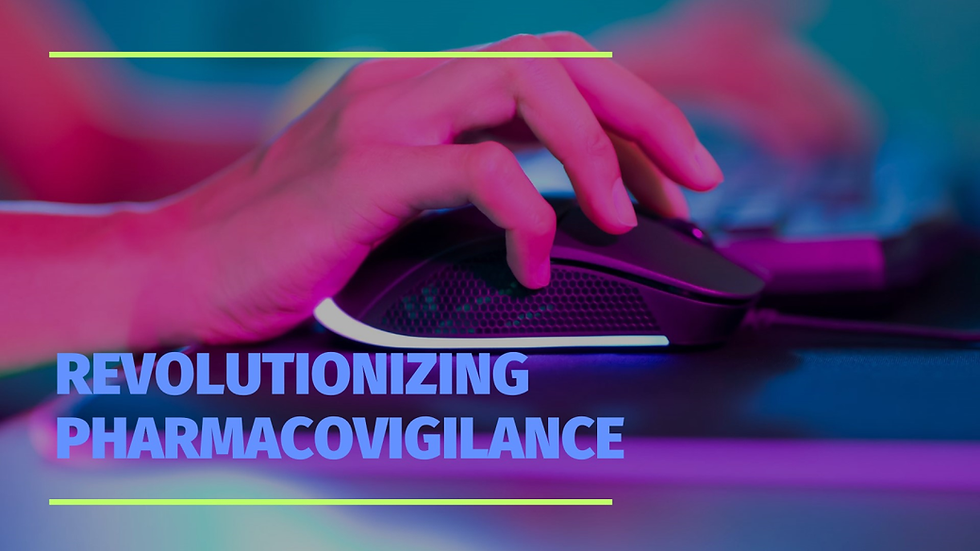
In the dynamic realm of pharmacovigilance, where the safety of drugs is paramount, efficient and standardized data transfer mechanisms are crucial for timely detection and assessment of adverse drug reactions (ADRs). The adoption of the E2B XML standard has revolutionized the landscape of data exchange in pharmacovigilance, offering a streamlined and interoperable approach to reporting and analyzing safety data. This blog explores the significance of E2B XML in pharmacovigilance, decoding its intricacies, benefits, and implications for enhancing patient safety and regulatory compliance.
Evolution of Data Transfer in Pharmacovigilance:
Legacy Systems and Challenges
Historically, pharmacovigilance relied on manual or semi-automated processes for reporting and exchanging safety data. These legacy systems were characterized by heterogeneous formats, disparate data structures, and limited interoperability, leading to inefficiencies, data discrepancies, and delays in signal detection and risk assessment.
Introduction of the E2B Standard:
To address these challenges, the International Council for Harmonization of Technical Requirements for Pharmaceuticals for Human Use (ICH) introduced the E2B standard for the electronic transmission of Individual Case Safety Reports (ICSRs) in pharmacovigilance. E2B, initially based on the Extensible Markup Language (XML), aimed to standardize the format and content of safety data submissions, facilitating seamless data exchange between stakeholders worldwide.
Understanding E2B XML:
E2B XML defines a structured format for encoding safety data elements, including patient demographics, drug information, adverse events, and clinical outcomes. The standard comprises predefined data elements organized into hierarchical structures, allowing for consistent and comprehensive representation of safety information across different systems and platforms.
E2B XML supports various message types for different stages of the pharmacovigilance process, including initial case reporting, follow-up information, and regulatory submissions. Each message type contains specific data elements and attributes tailored to the respective reporting requirements and regulatory guidelines.
Benefits of E2B XML Adoption:
The adoption of E2B XML streamlines the process of data transfer in pharmacovigilance, reducing manual effort and minimizing the risk of data entry errors. By standardizing data formats and structures, E2B XML enables automated data processing and validation, enhancing efficiency and accuracy in safety data exchange.
E2B XML promotes interoperability among pharmacovigilance systems and databases, enabling seamless integration and exchange of safety data between stakeholders. Standardized data formats facilitate communication and collaboration across regulatory agencies, pharmaceutical companies, healthcare providers, and other relevant entities, fostering a more cohesive and transparent pharmacovigilance ecosystem.
Adherence to the E2B XML standard ensures compliance with regulatory requirements for safety data reporting and submissions. Regulatory agencies such as the U.S. Food and Drug Administration (FDA) and the European Medicines Agency (EMA) mandate the use of E2B XML for electronic transmission of ICSRs, making it essential for pharmaceutical companies to implement and maintain compliant data transfer processes.
Implementation Challenges and Considerations:
Implementing E2B XML necessitates mapping existing data structures and fields to the standard format, which can be a complex and resource-intensive task. Developing comprehensive mapping rules and methodologies is essential to ensure accurate and consistent conversion of data from legacy systems to E2B XML.
Integrating E2B XML into existing pharmacovigilance systems requires careful planning and validation to ensure compatibility and reliability. Rigorous testing and validation procedures are essential to verify the accuracy, completeness, and integrity of data transferred via E2B XML messages, minimizing the risk of errors and discrepancies.
Future Directions and Innovations:
The evolution of pharmacovigilance and healthcare technology continues to drive advancements in data standards and interoperability. Emerging standards such as the International Organization for Standardization (ISO) IDMP (Identification of Medicinal Products) and HL7 FHIR (Fast Healthcare Interoperability Resources) are poised to further enhance the efficiency and effectiveness of data exchange in pharmacovigilance.
The integration of E2B XML with advanced technologies such as artificial intelligence (AI) and machine learning holds promise for improving signal detection, risk assessment, and decision-making in pharmacovigilance. By leveraging AI algorithms to analyze large volumes of safety data encoded in E2B XML, stakeholders can identify trends, patterns, and emerging safety signals more effectively, enabling proactive risk management and enhanced patient safety.
Conclusion:
The adoption of the E2B XML standard represents a pivotal milestone in the evolution of pharmacovigilance, revolutionizing the way safety data is reported, exchanged, and analyzed across the healthcare landscape. By standardizing data formats, promoting interoperability, and facilitating regulatory compliance, E2B XML plays a crucial role in enhancing efficiency, accuracy, and transparency in pharmacovigilance processes. As the field continues to evolve, ongoing collaboration, innovation, and adherence to best practices will be essential to maximize the benefits of E2B XML and ensure the safe and effective use of medications worldwide.

Comentarios